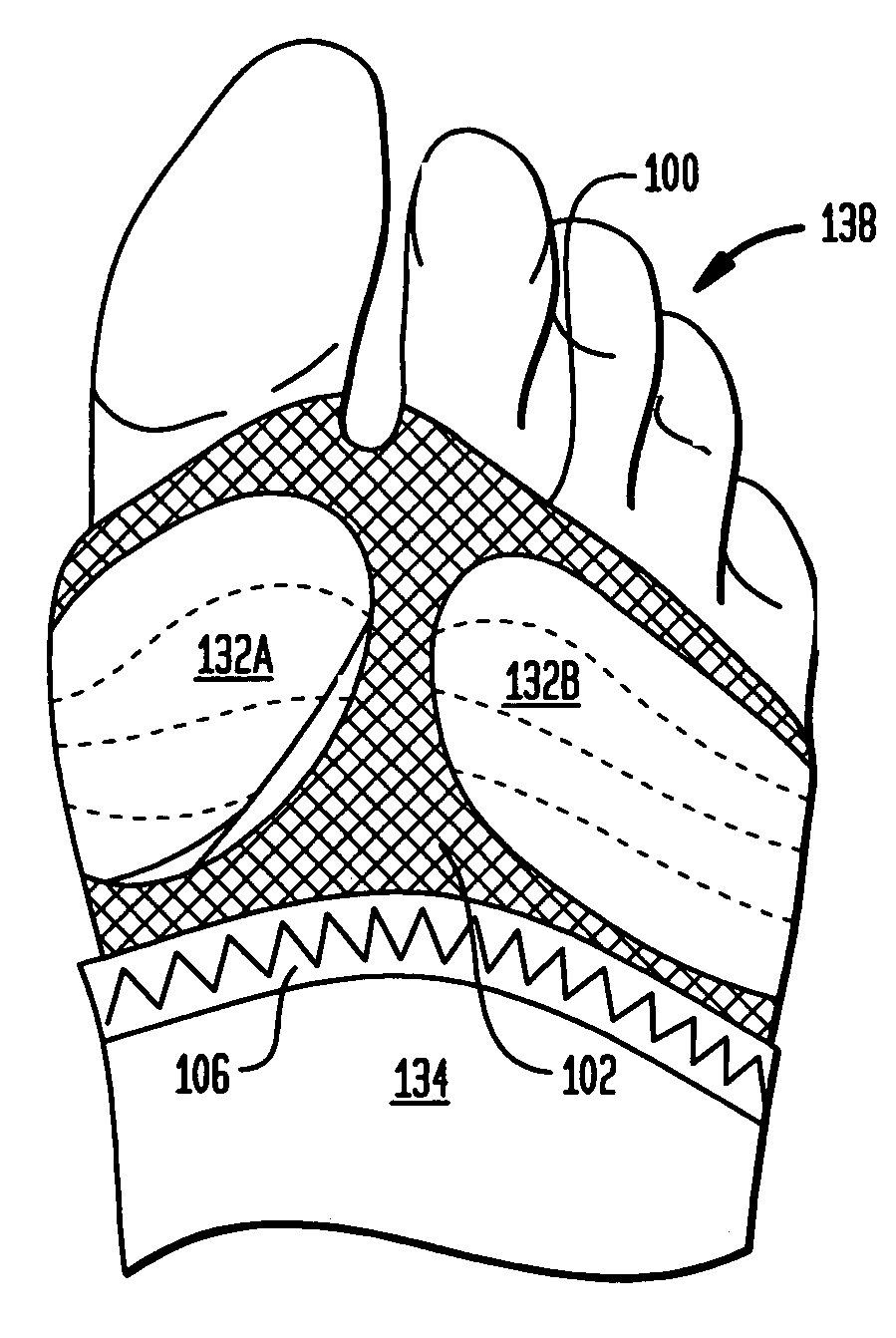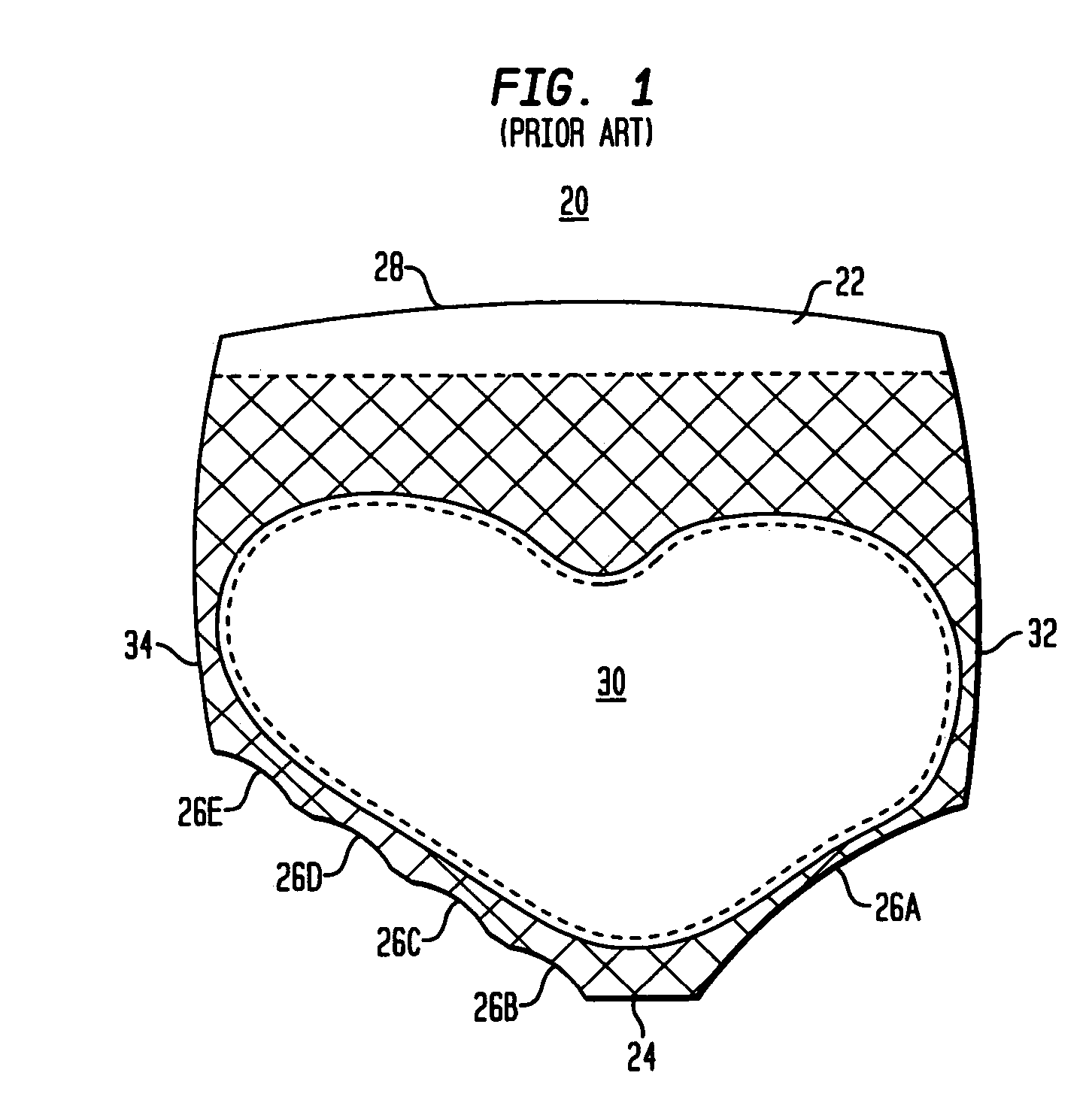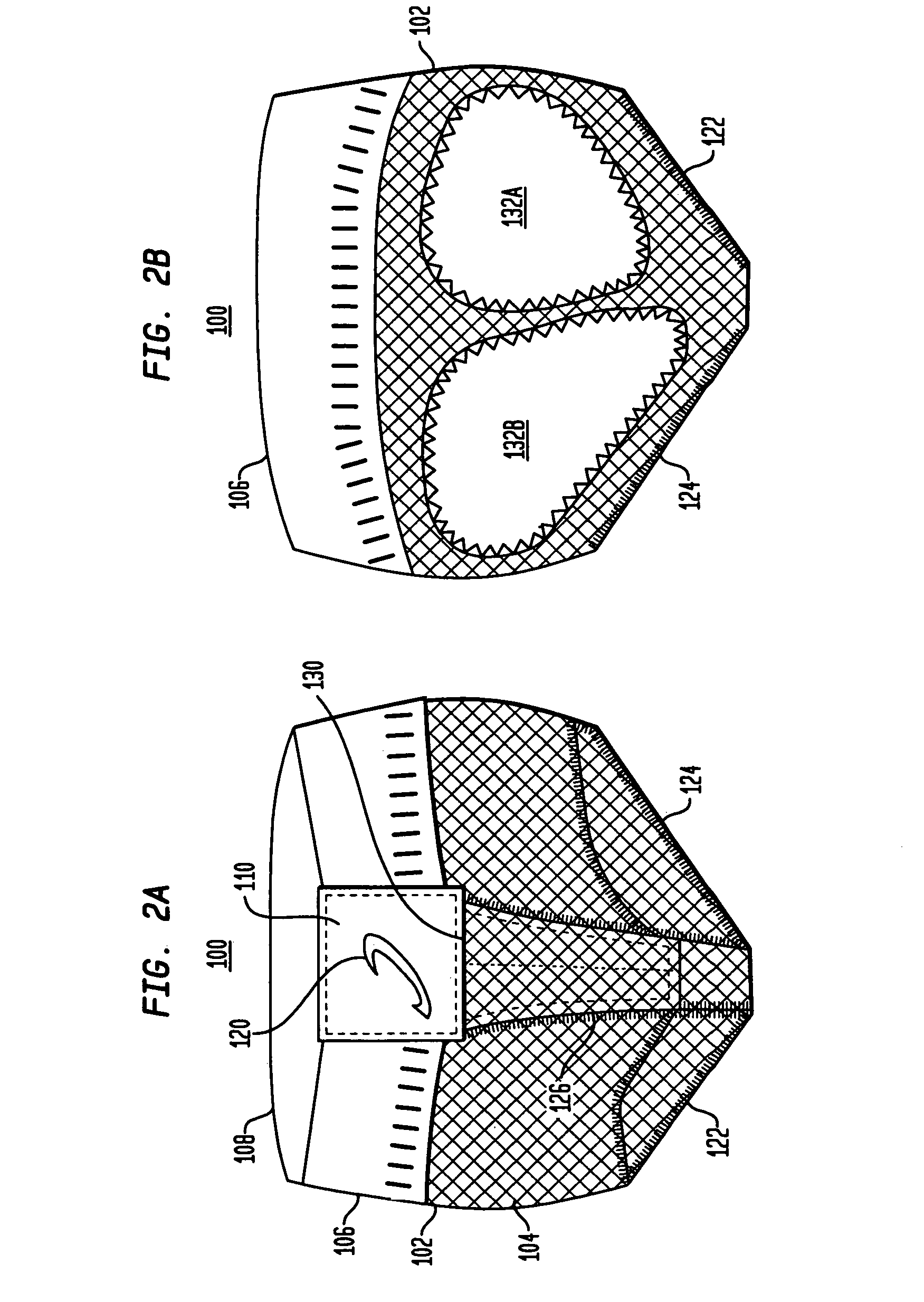Protective foot covering and dance shoes incorporating same
a protection and foot technology, applied in the field of footwear, can solve the problems of limited flexibility of shoes, foot injuries, and the form of dance may be very developed and complex, and achieve the effect of protecting the foot from injury
- Summary
- Abstract
- Description
- Claims
- Application Information
AI Technical Summary
Benefits of technology
Problems solved by technology
Method used
Image
Examples
Embodiment Construction
[0041]Referring to FIGS. 2A and 2B, in certain preferred embodiments of the present invention, a foot covering 100 includes a fabric 102 that is adapted to cover a foot. In certain preferred embodiments, the fabric is elastic, flexible, stretchable and / or breathable. In other preferred embodiments, the fabric is a mesh material having a plurality of pores 104 formed therein. The mesh material is preferably an elastic, breathable fabric. The pores 104 preferably enhance the tactile sense of a dancer when the foot covering 100 is worn over the front half of a foot. In certain preferred embodiments, the fabric 102 may be made of nylon, cotton, Lycra, and / or neoprene.
[0042]The foot covering 100 preferably includes an elastic band 106 attached to an edge of the mesh fabric 102. The elastic band defines a foot opening 108 (FIG. 2A) through which toes and the ball of a foot may be inserted. As will be described in more detail below, after the foot covering 100 has been secured over the bal...
PUM
 Login to View More
Login to View More Abstract
Description
Claims
Application Information
 Login to View More
Login to View More - R&D
- Intellectual Property
- Life Sciences
- Materials
- Tech Scout
- Unparalleled Data Quality
- Higher Quality Content
- 60% Fewer Hallucinations
Browse by: Latest US Patents, China's latest patents, Technical Efficacy Thesaurus, Application Domain, Technology Topic, Popular Technical Reports.
© 2025 PatSnap. All rights reserved.Legal|Privacy policy|Modern Slavery Act Transparency Statement|Sitemap|About US| Contact US: help@patsnap.com



